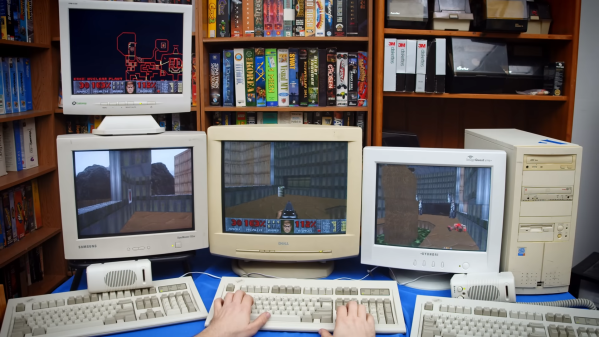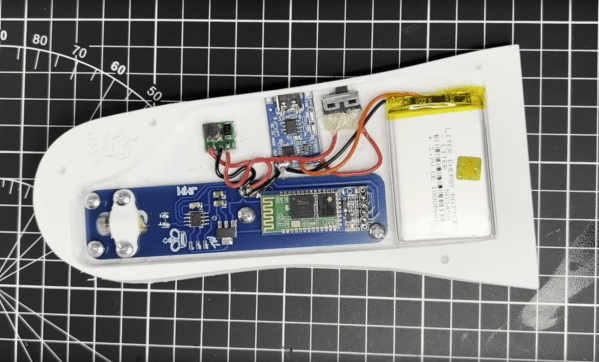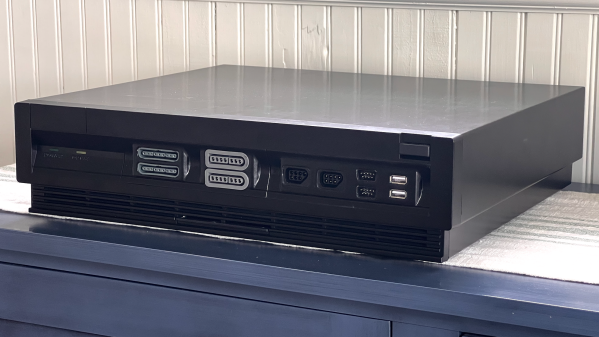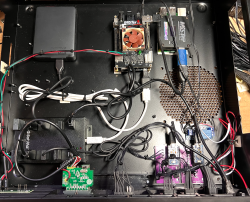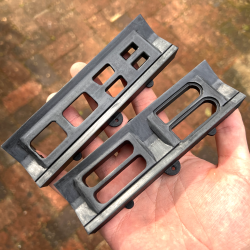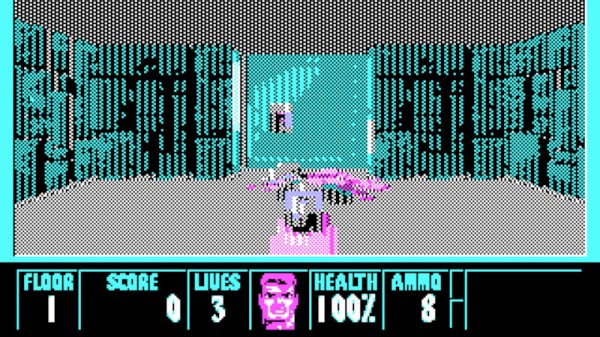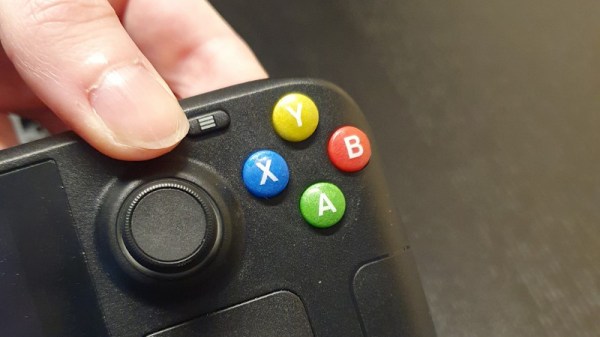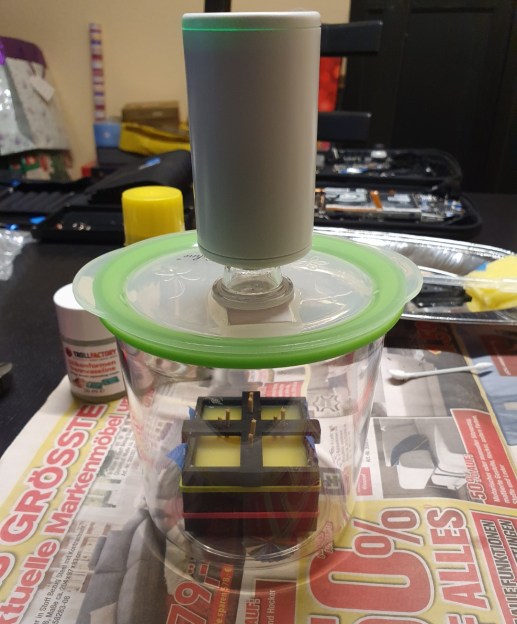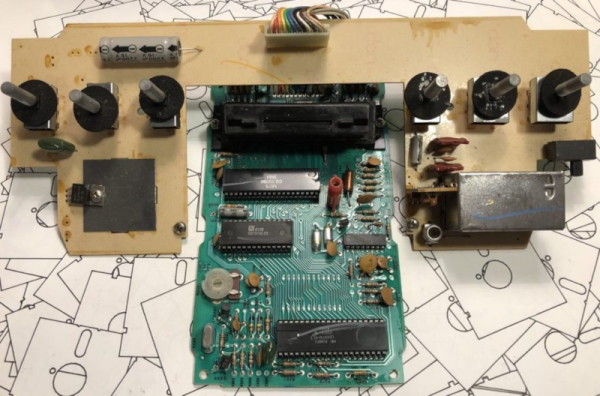We have a thing for DOOM, and we admit it. The source was released, and clever hackers have ported the engine to every system imaginable. It’s a right of passage, when hacking a machine, to run DOOM on it — be it a VoIP phone, or tractor. But the original 1993 release does have a few notable tricks, and there’s something to be said for recreating that experience on period hardware. And that’s what we’re covering today: [Tech Tangents] discovered DOOM’s multi-monitor support, and built a 4-computer cluster to show it off.
There is a catch, of course. DOOM 1.1 has the multi-monitor support, and under-the-hood, it works by running a copy of the game on individual computers, and controlling the drones over the network. As the game’s network code was updated for version 1.2, the multi-monitor feature was axed to make the network code easier to maintain. So, find a 1.1 shareware release, install it on a DOS machine with IPX drivers, and start each iteration with a -net flag. Use -left and -right to set the drones to the appropriate view. And that view is ninety degrees left and right.
Maybe not ideal, but at the time it was one of the first games to have any sort of multi-monitor support at all. Likely inspired by a commercial flight simulator setup. Either way, it’s a neat feature, and kudos to [Tech Tangents] for showing off this obscure feature of a beloved classic!
Continue reading “OG DOOM Shows Off The Origins Of Multi-Monitor”

